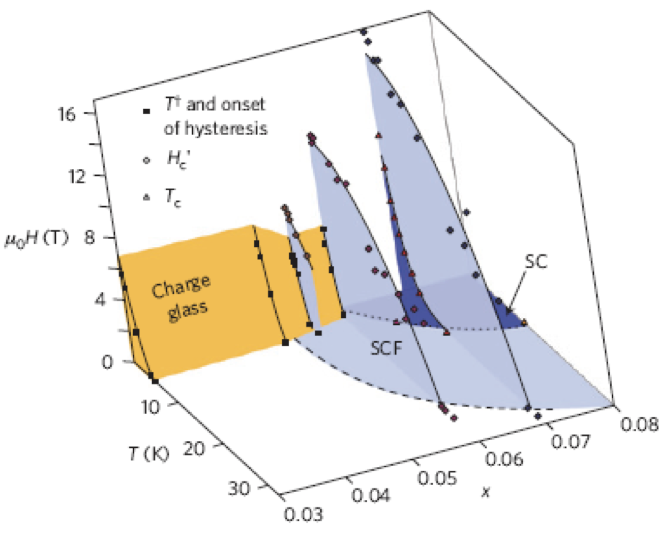Emergence of superconductivity from the dynamically heterogeneous insulating state in La2−xSrxCuO4
La2CuO4 is a parent cuprate compound, with a well-studied antiferromagnetic, insulating ground state. Substitution of La for Sr introduces charge carriers (holes), resulting to the emergence of novel states. The most notable is superconductivity, a state in which the material possesses zero electrical resistance while it expels the magnetic field from its interior
The evolution of the La2CuO4 insulating ground state with charge carrier doping and the emergence of superconductivity from that state is an open problem since its discovery. In an international collaboration between Greece and USA, Professor Christos Panagopoulos and collaborators made an extraordinary discovery, regarding the superconductor-insulator transition, introducing a new point of view on this issue.
In particular, very low temperature (< 1K) resistance experiments were performed as a function of temperature and magnetic field, in order to study in detail the ground sate of epitaxial La2−xSrxCuO4 thin films. The value (x) corresponds to the doping of the material and in this study it takes values from x=0.03 (insulator) to x=0.08 (superconductor).
It was observed that the charge glass phase, which is characteristic of the insulating state, is suppressed with increasing doping but it coexists with superconducting fluctuations. The charge glass order vanishes for x ≥ 0.06 and bulk superconductivity emerges, as known from the literature. The coexistence of both the glassy state and superconducting fluctuations (SCF) however, demonstrate that the superconductor – insulator transition is not an abrupt transition. Furthermore, superconducting fluctuations are quenched due to the dominated charge glass order at low dopings, suggesting that superconducting fluctuations exist even in the insulating side of the superconductor – insulator transition and compete with the charge glass. This phenomenon is not observed in conventional superconductors.

Reference: "Emergence of superconductivity from the dynamically heterogeneous insulating state in La2−xSrxCuO4", by X. Shi, G. Logvenov, A. Bollinger, I. Bozovic, C. Panagopoulos & D. Popovic, Nature Materials (2012) doi:10.1038/nmat3487.




